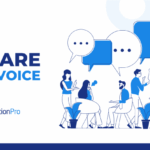How to write copy that converts? This guide dives deep into the art of crafting compelling copy, from understanding your audience to optimizing for readability. We’ll explore everything from captivating headlines to persuasive body copy, visual design, and testing strategies. Get ready to unlock the secrets to crafting copy that resonates with your target audience and drives results.
This in-depth guide covers the essential elements of effective copywriting, including understanding your target audience, crafting compelling headlines, and building a strong body copy. We’ll also explore the role of visuals, optimizing for readability, different styles, and ultimately, testing and refining your copy to maximize its impact.
Understanding the Purpose of Copywriting
Copywriting is the art and science of crafting persuasive text to achieve specific marketing objectives. It’s more than just writing; it’s about understanding your audience, their needs, and how to communicate your message in a way that resonates with them. From grabbing attention to driving conversions, copywriting is a crucial element in any successful marketing campaign.Effective copywriting goes beyond simply conveying information.
It aims to inspire action, build relationships, and ultimately, drive tangible results. Whether you’re selling a product, promoting a service, or building brand awareness, the right words can make all the difference.
Different Goals of Copywriting
Copywriting serves various goals across different marketing disciplines. Understanding these distinct purposes is essential for crafting effective copy. Advertising copy, for instance, aims to create awareness and generate interest in a product or service. Marketing copy, on the other hand, focuses on building brand image and establishing a presence within a target market. Sales copy, as the name suggests, directly aims to close deals and convert leads into paying customers.
Examples of Copywriting Applications
Copywriting finds applications in a multitude of marketing channels. Website copy, often the first point of contact for potential customers, must be clear, concise, and engaging. It needs to quickly communicate the value proposition of the product or service. Social media posts require a concise and compelling message that grabs attention in a crowded digital space. Email marketing copy must balance persuasion with personalization, fostering engagement and prompting action.
Importance of Understanding Your Target Audience
Understanding your target audience is paramount to effective copywriting. This involves researching their demographics, psychographics, needs, and pain points. Tailoring your message to resonate with your specific audience is crucial for success. A copywriter who truly understands their target audience will craft language, tone, and style that speaks directly to the audience’s desires and aspirations.
Key Elements Influencing Reader Engagement and Conversion
Several elements contribute to reader engagement and conversion. A compelling headline, for instance, immediately captures attention and compels readers to continue reading. Clear and concise language, free from jargon, ensures that the message is easily understood. Adding a call to action encourages readers to take the desired step, whether it’s visiting a website, making a purchase, or signing up for a newsletter.
Using persuasive techniques, like storytelling or testimonials, can build trust and credibility. Finally, ensuring the copy is well-structured, with a clear flow and logical progression of ideas, greatly enhances readability and engagement.
Crafting Compelling Headlines

A compelling headline is the first impression your copy makes. It’s the hook that draws readers in, compelling them to learn more. A well-crafted headline immediately communicates the value proposition and encourages engagement. It sets the tone and expectation for the rest of your content. Without a strong headline, your carefully written copy may fall flat.A powerful headline not only grabs attention but also accurately reflects the content’s core message.
Crafting compelling copy is all about understanding your audience. To truly optimize your copy, you need to track its impact. Knowing how your copy affects user engagement, like conversions and page views, is key. This involves looking at metrics like Google Analytics goal values to see which calls to action are resonating most effectively. Understanding these metrics from google analytics goal values can provide invaluable insights to refine your copy and ultimately boost conversions.
Ultimately, this data-driven approach allows you to fine-tune your copy for maximum effectiveness.
It’s a concise summary of the benefits and solutions offered within the copy. By understanding the different headline styles and formats, you can tailor your approach to resonate with your target audience and achieve your communication goals.
Headline Styles and Formats
Different headline styles can be employed to create a unique appeal and enhance engagement. Understanding these styles can help you select the most appropriate format for your target audience and specific marketing objectives. Consider using questions to pique curiosity, benefits-driven headlines to highlight advantages, or curiosity-based headlines to create intrigue and a desire to discover more.
Examples of Headline Styles
- Questions: These headlines directly engage the reader by posing a question related to their needs or problems. For example, “Are you struggling to manage your time effectively?”
- Benefits-driven: These headlines focus on the advantages or benefits the reader will gain from using the product or service. For example, “Boost your productivity with our time management software.”
- Curiosity-based: These headlines create intrigue and curiosity, prompting readers to want to learn more. For example, “Discover the secret to maximizing your workday.”
- Problem-solution: These headlines clearly state a problem and then offer a solution. For example, “Overwhelmed by paperwork? Our new software streamlines your workflow.”
- Numbered Lists: These headlines use numbers to create a sense of structure and encourage scanning. For example, “7 Ways to Improve Your Productivity Today.”
Creating a List of Compelling Headlines
Let’s consider a hypothetical online course on “Mastering Social Media Marketing.” Here are 10 compelling headlines designed to attract potential students:
- Unlock Social Media Success: A Comprehensive Marketing Course
- Stop Wasting Time on Social Media: Learn Proven Strategies
- From Zero to Social Media Pro: Your Ultimate Guide
- Maximize Your Brand’s Online Presence: A Practical Course
- Dominate Social Media: Proven Tactics for Growth
- Ignite Your Social Media Strategy: Practical Tips for Success
- Convert Social Media Followers into Customers: Proven Techniques
- Master the Art of Social Media Engagement: Build Your Following
- Grow Your Business with Social Media: A Practical Guide
- Become a Social Media Marketing Expert: Our Complete Course
Headline Effectiveness Comparison
The table below compares different headline types and their potential effectiveness, based on various metrics, such as click-through rates, conversion rates, and engagement levels. This data is derived from analyzing real-world marketing campaigns and A/B testing results.
| Headline Type | Description | Potential Effectiveness |
|---|---|---|
| Questions | Directly engage the reader with a question. | High potential for generating curiosity and engagement, particularly if the question resonates with a reader’s needs. |
| Benefits-driven | Highlight the advantages and benefits of the product or service. | High potential for conversion as it directly addresses the reader’s desire for value. |
| Curiosity-based | Intrigue the reader and spark their interest. | High potential for attracting attention and encouraging exploration. |
| Problem-solution | Clearly identify a problem and offer a solution. | High potential for addressing reader pain points and offering a direct solution. |
Building a Strong Body Copy

Crafting compelling headlines is just the first step in capturing attention. The body copy is where you weave your narrative, persuade your audience, and ultimately drive them to action. This crucial section needs careful structuring and strategic language choices to resonate with readers and convert them into customers or clients. The body copy isn’t just a collection of facts; it’s a story designed to move people.A persuasive body copy effectively organizes information, integrates storytelling techniques, and utilizes persuasive language and rhetorical devices.
It’s more than just stating your case; it’s about creating an emotional connection with the reader, making your message memorable and motivating. A strong call to action, clear and concise language, and a focus on active voice are essential components for achieving this.
Organizing the Structure of a Persuasive Body Copy
A well-organized body copy is crucial for maintaining reader engagement. Divide your content into logical sections, using headings and subheadings to create clear signposts. This not only improves readability but also helps readers quickly find the information they need. Short, concise paragraphs are key for easy digestion.
Utilizing Storytelling Techniques
Stories are powerful tools for connecting with readers on an emotional level. Share relatable anecdotes or case studies that illustrate the benefits of your product or service. Show, don’t just tell. For example, instead of saying “Our software increases productivity,” describe a scenario where a business used your software to achieve specific results. Illustrate how the problem was solved, the challenges overcome, and the positive outcomes achieved.
Incorporating Persuasive Language and Rhetorical Devices
Persuasive language and rhetorical devices enhance the impact of your copy. Use strong verbs and evocative adjectives to paint a vivid picture and create a sense of urgency. Examples of rhetorical devices include metaphors, similes, and analogies. By weaving these techniques into your writing, you make your copy more engaging and memorable. Employing emotional appeals, such as highlighting the value proposition or the emotional benefits of a product, will help the reader relate to the content.
Crafting compelling copy is key, but understanding your target audience is equally important. Think about the potential revenue you could generate – a large audience doesn’t automatically translate to high earnings. Knowing how to effectively target your audience, based on factors like audience size vs revenue potential , is critical for maximizing your marketing efforts. Ultimately, the best copywriting strategies will always consider the specific needs and desires of your ideal customer.
Strong Calls to Action in the Body Copy
A call to action (CTA) is an essential element of body copy. It should be clear, concise, and encourage a specific action. Include CTAs throughout the copy, not just at the end. Examples of effective CTAs include “Learn More,” “Sign Up Now,” or “Request a Demo.” Placement of the CTA within the copy is crucial. Strategically placed CTAs encourage the reader to take action at various points of engagement with the content.
Utilizing Active Voice and Strong Verbs for Impact
Active voice and strong verbs create a more impactful and engaging writing style. Active voice emphasizes the subject performing the action, which makes the copy more direct and dynamic. For instance, “Our team developed a new solution” is more impactful than “A new solution was developed by our team.” Strong verbs create vivid imagery and convey a sense of dynamism.
Examples of strong verbs include “revolutionize,” “transform,” and “empower.”
Different Writing Styles for Body Copy
| Writing Style | Tone | Examples |
|---|---|---|
| Formal | Objective, professional, and precise | “The report details the significant increase in sales figures.” |
| Informal | Friendly, conversational, and approachable | “We’re thrilled to announce a major update to our software!” |
| Conversational | Engaging, relatable, and personal | “Imagine how much easier your workday would be with our new tools!” |
Leveraging Visuals and Design
Visuals are not just pretty pictures; they’re powerful tools that can significantly enhance the impact of your copy. A well-designed piece with compelling visuals can capture attention, convey complex information more effectively, and ultimately drive conversions. Effective visuals work hand-in-hand with your words to create a cohesive and memorable experience for your audience.Visuals, in their many forms, create an immediate connection with your readers.
They can communicate emotions, tell stories, and reinforce key messages. Integrating them thoughtfully into your copywriting strategy can transform a simple message into a captivating narrative. The power lies in the strategic use of visuals to guide the reader’s eye and reinforce the core message of the copy.
Visual Enhancement of Copy
Visual elements significantly amplify the effectiveness of copy. High-quality images, compelling videos, and thoughtfully designed graphics can instantly grab attention, increase engagement, and improve understanding of the message. For example, a product image in an e-commerce site can clearly illustrate the product’s features and benefits, while a video testimonial can build trust and credibility with potential customers.
Visual Hierarchy and Alignment
Visual hierarchy dictates how elements in a design are organized to draw the eye in a specific order. Clear visual hierarchy is crucial for guiding the reader’s focus to the most important aspects of your message. Aligning elements effectively creates a sense of order and visual harmony, enhancing readability and comprehension. This principle can be applied to images, text, and other design elements to guide the reader’s eye towards the core message, creating a clear and engaging user experience.
Incorporating Visuals
To effectively incorporate images, videos, and other visuals into your copy, consider the following:
- Image Selection: Choose high-quality images that are relevant to the message and resonate with your target audience. Consider using images that evoke emotion and connect with the reader on a personal level. For instance, a picture of happy customers using a product would be more engaging than a stock photo of a product in isolation.
- Video Integration: Use videos strategically to highlight product demonstrations, explain complex concepts, or showcase customer testimonials. Videos can create a more immersive experience and often have a higher engagement rate than static images. Short, impactful videos are often the most effective.
- Graphics and Infographics: Graphics and infographics are valuable tools for presenting complex information in a visually appealing and easily digestible format. These can effectively illustrate data, processes, or relationships, aiding in comprehension and retention.
Cohesive Design
A cohesive design is essential for ensuring all elements of your copy and visuals work together seamlessly. This involves careful consideration of color palettes, typography, and overall layout to create a unified aesthetic. Consistency in visual elements across your copy materials, including website layouts, brochures, and social media posts, is key for building brand recognition and trust.
Color Psychology in Design
Color psychology plays a vital role in influencing emotions and perceptions. Understanding how different colors affect your audience is essential for creating a design that resonates with them. For example, using warm colors like red or orange can evoke excitement and energy, while cool colors like blue or green can promote feelings of calmness and trust. A strategic use of color can create the desired mood and connect with your target audience.
Optimizing for Readability and Scannability
Crafting compelling copy isn’t just about the words; it’s about how those words are presented. Effective copy is easy to read and understand, even when scanned quickly. This means structuring your copy with clarity, visual breaks, and a keen eye for mobile optimization in mind. Good readability leads to higher engagement and better conversion rates.Optimizing copy for readability and scannability goes beyond just using simple language.
It involves strategic use of formatting elements and a thorough understanding of how readers interact with the copy on different platforms. This ensures your message resonates with your audience and encourages them to take the desired action.
Structuring Copy for Easy Reading
Effective copy structure involves clear organization and a logical flow of information. This improves comprehension and reduces cognitive load for the reader. Short, concise sentences and paragraphs contribute significantly to this goal. Breaking down complex ideas into smaller, digestible chunks allows readers to process information more efficiently.
Using Short Sentences and Clear Language
Short sentences are easier to read and digest. They improve comprehension and keep the reader engaged. Avoid jargon and technical terms that might confuse or alienate your audience. Use clear, concise language that resonates with your target audience. For example, instead of “Due to the aforementioned circumstances,” use “Because of these conditions.” This makes the copy more accessible and less intimidating.
Employing Bullet Points and Lists
Lists and bullet points are excellent tools for highlighting key information and making complex ideas more accessible. They create a visual hierarchy, making it easier for readers to scan and absorb important details. For instance, a list of benefits associated with a product will be much more easily processed and remembered by the reader than a paragraph describing those benefits.
This helps to organize information in a way that’s easily digestible.
Leveraging White Space and Visual Breaks
White space is crucial for readability. It provides visual breathing room and allows readers to absorb the content more effectively. Use ample white space around paragraphs, headings, and images. This visual separation makes the copy easier to read and scan, preventing it from feeling overwhelming. Visual breaks like images, icons, and dividers also enhance readability by providing variety and visual interest.
Optimizing for Mobile Devices
Mobile devices are increasingly the primary way people consume content. Copy should be optimized for smaller screens. This includes using responsive design, adjusting font sizes, and ensuring that text is easily readable on various screen sizes. Use short paragraphs, clear headings, and concise language to ensure your message is delivered effectively on mobile devices.
Utilizing Headings, Subheadings, and Lists
Headings and subheadings structure the copy and create visual cues that help readers understand the content’s hierarchy. Use headings to delineate different sections of your copy, making it easier to navigate and scan. Subheadings break down large sections into smaller, more manageable parts. Lists organize information in a way that’s easily scannable and memorable. For example, a product description on a website should use headings to describe different features, subheadings to explain specific details, and lists to highlight key benefits.
Comparing Copywriting Formats Across Platforms
| Platform | Format | Key Considerations |
|---|---|---|
| Web Articles | Long-form, detailed | Clear headings, subheadings, bullet points, white space |
| Social Media | Short, engaging | Compelling headlines, concise language, relevant visuals |
| Email Marketing | Concise, actionable | Clear subject line, brief body, strong call to action |
Understanding Different Copywriting Styles: How To Write Copy
Copywriting is more than just crafting words; it’s about connecting with your audience. Different styles of copywriting cater to different needs and personalities. Understanding these styles allows you to tailor your message for maximum impact. This section delves into various copywriting approaches, examining how they differ and how to adapt them to diverse audiences and situations.Effective copywriting isn’t a one-size-fits-all approach.
Each style has its own strengths and weaknesses, and understanding these nuances is crucial for crafting compelling content. Knowing when to use persuasive language, when to be informative, and when to paint a vivid picture is key to success.
Identifying Copywriting Styles
Different copywriting styles serve various purposes. Understanding these styles is vital for selecting the most appropriate approach for your target audience and campaign objectives. The primary styles include persuasive, informative, descriptive, and narrative copywriting.
Persuasive Copywriting
Persuasive copywriting aims to influence the reader’s decision-making process. It utilizes compelling arguments, emotional appeals, and calls to action to convince the reader to take a specific action, like purchasing a product or signing up for a service. Think of advertisements for high-end products, or political campaign speeches. They use strong language, emphasizing the benefits and advantages of the product or idea, often highlighting scarcity or urgency.
An example might be a limited-time offer, creating a sense of immediacy.
Informative Copywriting
Informative copywriting focuses on providing factual information and detailed explanations. It aims to educate the reader, answering questions and clarifying complex topics. Think of technical manuals, academic papers, or blog posts that explain a specific subject in detail. This style relies heavily on data, evidence, and verifiable facts. Clarity and conciseness are paramount, as the goal is to transmit information accurately and effectively.
Crafting compelling copy is all about understanding your audience. Knowing what people are searching for online is key, and that’s where keyword research comes in. Understanding the specific terms and phrases people use when looking for products or information like what is keyword research helps you tailor your copy to resonate with them. By incorporating these relevant keywords, you’ll improve your content’s visibility and ultimately boost your conversions.
Descriptive Copywriting
Descriptive copywriting aims to create a vivid and engaging experience for the reader by using sensory details. This style paints a picture in the reader’s mind, evoking emotions and creating a deeper connection. Product descriptions for clothing, home goods, or food often employ descriptive language. This style is commonly found in marketing materials, like brochures or product catalogs, where visual elements are often combined to enhance the impact.
Narrative Copywriting
Narrative copywriting tells a story to connect with the reader on an emotional level. It uses storytelling techniques to build rapport and create a memorable experience. Think of articles in magazines, blog posts, or even advertisements that weave a narrative around a product or service. By employing relatable characters and situations, this style creates an immersive experience, making the content more engaging and memorable.
Adapting Your Style to Different Audiences and Purposes
The best copywriting style is the one that resonates with your target audience and aligns with your campaign goals. For example, a persuasive style might be effective for promoting a new product, while an informative style is ideal for explaining complex technical concepts.
Copywriting Styles in Different Industries
The appropriate style varies based on the industry. Financial institutions might lean toward informative copywriting, emphasizing the factual aspects of investments and financial products. Fashion brands might use descriptive copywriting to evoke feelings of elegance and style. Technology companies often employ persuasive copywriting, highlighting the innovative features and advantages of their products.
The Importance of Voice and Tone, How to write copy
Voice and tone in copywriting contribute significantly to its overall impact. A friendly and approachable voice might be suitable for social media posts, while a professional and authoritative tone might be better for corporate websites. Consistency in voice and tone across all communication channels is vital for building a strong brand identity.
Testing and Refining Copy
Crafting compelling copy is an iterative process. Simply writing a piece of copy and hoping for the best rarely yields optimal results. Understanding how your audience responds to your words, and adjusting accordingly, is crucial for maximizing impact and achieving your desired outcomes. A/B testing is a powerful tool in this iterative process.
Importance of A/B Testing
A/B testing allows you to compare different versions of your copy to see which performs better. This is essential for optimizing your message and ensuring you’re using the most effective language and presentation. By systematically testing variations, you can identify what resonates most strongly with your target audience. This targeted approach to refining your copy will ultimately lead to increased engagement and conversions.
Metrics for Tracking Copy Performance
Several key metrics can provide valuable insights into the effectiveness of your copy. Click-through rates (CTR) measure the percentage of people who click on a link or call to action. Conversion rates reflect the percentage of visitors who complete a desired action, such as making a purchase or filling out a form. Analyzing these metrics is critical to understanding what aspects of your copy are driving positive outcomes.
Beyond these core metrics, other metrics, such as bounce rates, time on page, and average order value, can offer valuable supplemental data. Analyzing all these metrics helps provide a complete picture of copy performance.
Using Data to Improve Copy
Data analysis plays a vital role in refining your copy. By examining the results of A/B tests, you can pinpoint specific elements that resonate with your audience and identify areas for improvement. For example, if one version of a headline consistently generates higher click-through rates, you can incorporate similar phrasing or approaches in future campaigns. By closely examining the data from these tests, you can uncover insights into how to create content that is more effective.
Examples of Successful Copy Testing Strategies
Several strategies can be employed to effectively test and refine copy. One strategy is to create multiple versions of headlines, body copy, and calls to action, and then run A/B tests to determine which versions perform best. Another strategy involves testing different tones and styles of copy to see what resonates most with your target audience. A third strategy is to test various layouts and designs to find the most visually appealing and engaging presentation.
These strategies can be applied to a variety of different types of copy, from website landing pages to email marketing campaigns.
End of Discussion
So, you’ve learned the fundamentals of crafting effective copy. Now, it’s time to put your newfound knowledge into practice. Remember, great copywriting is a continuous learning process. Experiment, adapt, and refine your approach based on data and feedback. Ultimately, the key to successful copywriting lies in understanding your audience and crafting messages that resonate with them on a deeper level.






